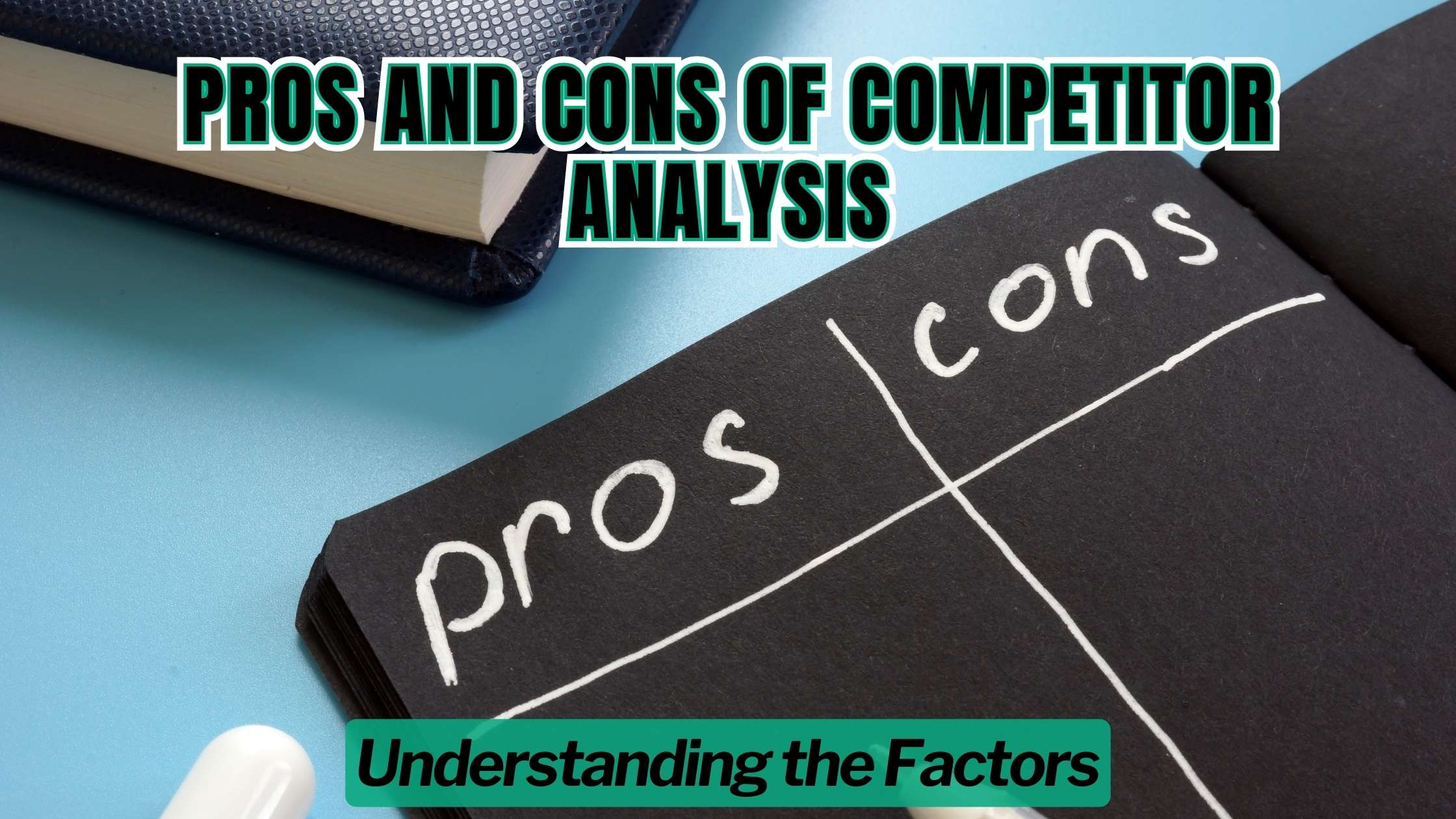Pros and Cons of Competitor Analysis: Understanding the Factors
- Expense Management Software Credit Cards Investing Business Solutions


Pros and Cons of Competitor Analysis: Understanding the Factors
In the fast-paced and competitive landscape of business, staying ahead of the curve is essential for sustained success. Competitor analysis is a crucial component of strategic planning, offering insights into market trends, consumer behavior, and industry dynamics. However, like any business strategy, competitor analysis comes with its own set of advantages and disadvantages. In this comprehensive guide, we’ll explore the pros and cons of competitor analysis, empowering businesses to make informed decisions and gain a competitive edge.
The Advantages of Competitor Analysis
1. Identifying Market Opportunities:
Competitor analysis allows businesses to identify gaps in the market, unmet customer needs, and emerging trends. By analyzing competitors’ strategies and offerings, businesses can uncover opportunities for innovation and differentiation, enabling them to capitalize on untapped market segments.
2. Benchmarking Performance:
By benchmarking their performance against competitors, businesses can assess their strengths and weaknesses relative to industry standards. This benchmarking process provides valuable insights into areas where the business excels and areas that require improvement, guiding strategic decision-making and resource allocation.
3. Understanding Consumer Preferences:
Competitor analysis provides valuable insights into consumer preferences, purchasing behavior, and brand perception. By analyzing competitors’ products, pricing strategies, and marketing campaigns, businesses can gain a deeper understanding of their target audience and tailor their offerings to meet their needs more effectively.
4. Anticipating Market Trends:
By monitoring competitors’ activities and industry trends, businesses can anticipate market shifts and proactively adjust their strategies accordingly. This foresight enables businesses to stay agile and responsive in a rapidly evolving market, reducing the risk of being caught off guard by changes in consumer preferences or competitive dynamics.
5. Informing Strategic Decision-Making:
Competitor analysis provides valuable data and insights to inform strategic decision-making across various aspects of the business, including product development, marketing, pricing, and distribution. By leveraging this information, businesses can make informed decisions that align with their overall objectives and drive sustainable growth.
The Disadvantages of Competitor Analysis
1. Risk of Imitation:
One of the main risks of competitor analysis is the temptation to imitate competitors’ strategies or offerings blindly. While it’s essential to stay informed about competitors’ activities, businesses must maintain their unique value proposition and brand identity to differentiate themselves effectively in the market.
2. Limited Scope of Analysis:
Competitor analysis may provide valuable insights into immediate competitors within the same industry or market segment. However, it may overlook potential disruptors or indirect competitors operating in adjacent markets or emerging technologies. Businesses must broaden their scope of analysis to account for these factors adequately.
3. Overemphasis on Short-Term Tactics:
In some cases, competitor analysis may lead to an overemphasis on short-term tactics or reactionary decision-making. Businesses must strike a balance between monitoring competitors’ activities and focusing on long-term strategic objectives to ensure sustainable growth and competitive advantage.
4. Resource Intensive:
Competitor analysis can be resource-intensive, requiring time, manpower, and financial investment to gather and analyze data effectively. Small businesses or startups with limited resources may find it challenging to allocate sufficient resources to competitor analysis without neglecting other critical areas of their operations.
5. Incomplete Information:
Despite efforts to gather comprehensive data, competitor analysis may suffer from incomplete or outdated information. Competitors’ strategies, performance metrics, and market positioning may change rapidly, making it challenging to maintain accurate and up-to-date insights for strategic decision-making.
Relevant SaaS Products for Competitor Analysis
As businesses seek to leverage competitor analysis effectively, several SaaS products offer valuable tools and solutions for gathering, analyzing, and interpreting competitive intelligence. Here are some relevant SaaS products worth considering:
- SEMrush: SEMrush is an all-in-one digital marketing platform that provides tools for keyword research, competitive analysis, backlink analysis, and more. With SEMrush, businesses can gain valuable insights into competitors’ organic and paid search strategies, helping them identify opportunities and optimize their own campaigns.
- Ahrefs: Ahrefs is a comprehensive SEO toolset that offers features for backlink analysis, keyword research, content analysis, and rank tracking. With Ahrefs, businesses can gain insights into competitors’ link building strategies, content performance, and search rankings, enabling them to refine their own SEO strategies accordingly.
- Moz: Moz is a leading provider of SEO software and tools that help businesses improve their search engine visibility and rankings. With features such as keyword research, site auditing, and rank tracking, Moz enables businesses to track competitors’ SEO performance and identify areas for improvement in their own campaigns.
- SpyFu: SpyFu is a competitive intelligence tool that provides insights into competitors’ search advertising strategies, keywords, and ad copy. By analyzing competitors’ PPC (pay-per-click) campaigns, businesses can uncover valuable insights to optimize their own ad campaigns and maximize ROI.
- SimilarWeb: SimilarWeb is a market intelligence platform that offers insights into competitors’ website traffic, audience demographics, and digital marketing strategies. With SimilarWeb, businesses can benchmark their performance against competitors, identify traffic sources, and discover new opportunities for growth.
Conclusion
In conclusion, competitor analysis is a valuable tool for businesses seeking to gain insights into market trends, consumer behavior, and competitive dynamics. By understanding the pros and cons of competitor analysis, businesses can leverage this strategy effectively to inform strategic decision-making, identify opportunities, and gain a competitive edge in their industry.
As businesses navigate the complexities of competitor analysis and seek to optimize their online presence, platforms like Subscribed.FYI offer invaluable resources and insights for managing the SaaS stack effectively. Subscribed.FYI provides a centralized platform for discovering, comparing, and managing SaaS tools, including those relevant to competitor analysis, digital marketing, and business intelligence. By accessing Subscribed.FYI Deals, businesses can unlock exclusive savings on essential SaaS products, empowering them to maximize efficiency and drive success in the competitive business landscape.
Relevant Product Links:
Explore Subscribed.FYI:





